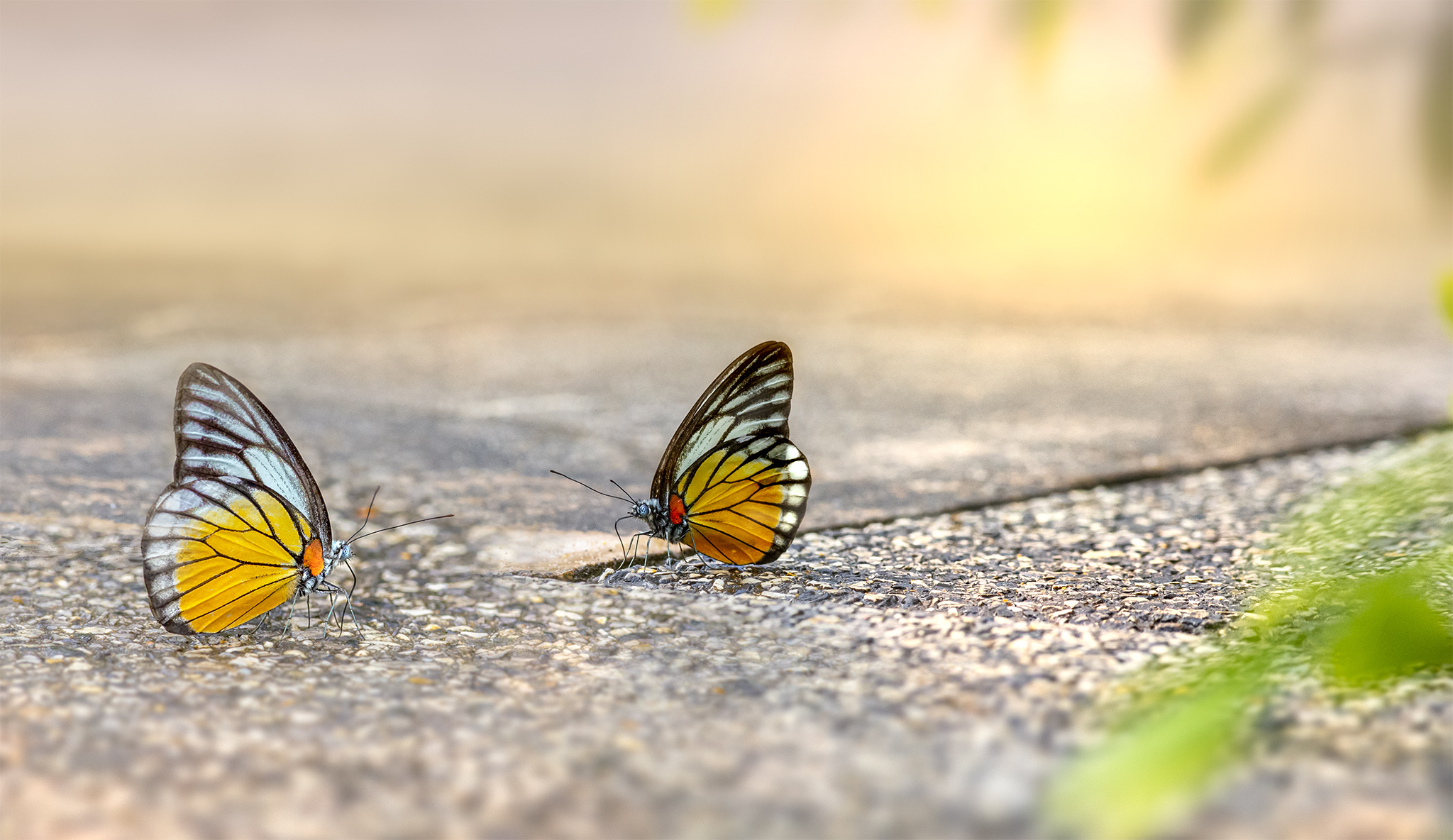The Orange Gull (Cepora judith) is a beautiful butterfly belonging to the family Pieridae, which includes the whites, yellows, and sulfurs. Known for its delicate and contrasting coloration, the Orange Gull is found primarily in tropical and subtropical regions of Southeast Asia. Its bright colors and characteristic pattern make it an eye-catching species, typically seen fluttering around forest edges and open fields.
Physical Description:
- Size: The Orange Gull is a medium-sized butterfly, with a wingspan ranging from 50 to 65 mm.
- Coloration:
- Males: The male Orange Gull has a predominantly white upperwing surface with bold black markings along the edges. The forewings often display a vivid orange patch near the base, which contrasts beautifully against the white background.
- Females: The females are slightly duller and more heavily marked, with darker black veins and patterns that cover a larger portion of the wings.
- Underside: The underside of both sexes is a soft, creamy yellow or light brown, with fine brownish veins. The subdued underside coloration helps in camouflage when the butterfly rests with closed wings.
- Wing Shape: The forewings are slightly pointed, and the hindwings are rounded, giving the butterfly an elegant appearance. The delicate veins are more prominent on the female’s wings.
Behavior:
- Flight: The Orange Gull has a quick, fluttery flight, similar to other Pieridae butterflies. It is most active during the day, basking in sunny areas and frequently seen flying close to the ground in search of nectar.
- Feeding: Adults primarily feed on nectar from a variety of flowering plants. They are often attracted to colorful blooms in gardens, open woodlands, and meadows.
- Mud-puddling: Males are commonly seen mud-puddling, gathering at moist patches of soil or along riverbanks to drink mineral-rich water. This behavior helps them obtain essential salts and nutrients needed for reproduction.
Habitat:
The Orange Gull is found in a range of habitats, including:
- Lowland forests and clearings: Prefers sunny spots near forest edges and clearings where flowering plants are abundant.
- Open grasslands and meadows: Often seen flying over grassy areas in search of nectar sources.
- Riversides and wetlands: The butterfly is attracted to moist areas where males can engage in mud-puddling.
- Plantations and gardens: In more cultivated areas, it can be seen visiting gardens and agricultural landscapes with suitable flowering plants.
Distribution:
The Orange Gull is native to Southeast Asia and is widely distributed across the region. It can be found in countries such as:
- Thailand
- Malaysia
- Singapore
- Indonesia
- Philippines
- Myanmar
It is also present in parts of the Indian subcontinent, particularly in the northeastern regions, and in southern China. The butterfly’s distribution varies depending on local climatic conditions, and it prefers warm, tropical environments.
Reproduction and Life Cycle:
- Eggs: Females lay small, pale yellow eggs singly on the host plants, usually on the undersides of leaves. The eggs hatch within a few days, depending on temperature and humidity.
- Caterpillars: The larvae are slender and green, often marked with faint longitudinal stripes. They feed on the leaves of plants in the Capparaceae family, including various species of Capparis. The caterpillars are well-camouflaged against the green foliage.
- Pupation: The caterpillars eventually form chrysalises, which are typically attached to a leaf or stem. The pupae are green or brown, depending on the background, providing camouflage during this vulnerable stage.
- Adult Emergence: After a pupation period of a few weeks, adult butterflies emerge to begin the next generation. The life cycle may vary depending on environmental conditions, with more generations occurring in favorable climates.
Conservation Status:
The Orange Gull is not currently considered threatened, and its populations are generally stable across its range. However, like many tropical butterflies, it is susceptible to habitat loss due to deforestation and land conversion. Preserving its forest and meadow habitats is essential for maintaining healthy populations.
Interesting Facts:
- Color Variability: The intensity of the orange and black markings can vary significantly between individuals, particularly depending on local environmental conditions and seasonal changes.
- Mimicry and Defense: Although not toxic, the bright colors of the Orange Gull serve as a form of Batesian mimicry, deterring potential predators by imitating the warning coloration of genuinely toxic species.
- Attraction to Moisture: The tendency of male Orange Gulls to gather in large numbers at puddles or along riverbanks is not only a feeding behavior but also a social one. This communal mud-puddling is often an opportunity for males to meet and compete for mates.
Ecological Role:
The Orange Gull, like other butterflies, is an important pollinator in its habitat. By visiting a variety of flowering plants, it helps in the pollination process, ensuring the reproductive success of many wildflowers. Additionally, its larvae serve as a food source for various predators, contributing to the balance of the ecosystem.
Conclusion:
The Orange Gull (Cepora judith) is a vibrant and dynamic butterfly species native to Southeast Asia. With its distinctive coloration, fast flight, and interesting behaviors, it stands out among the diverse butterfly fauna of the region. Although not currently threatened, preserving its natural habitats will ensure that this beautiful butterfly continues to grace tropical and subtropical landscapes for generations to come. Its presence in a garden or meadow is always a delightful sight, offering a glimpse of the rich biodiversity of the tropics.
Views: 1333
Subscribe to the newsletter:
